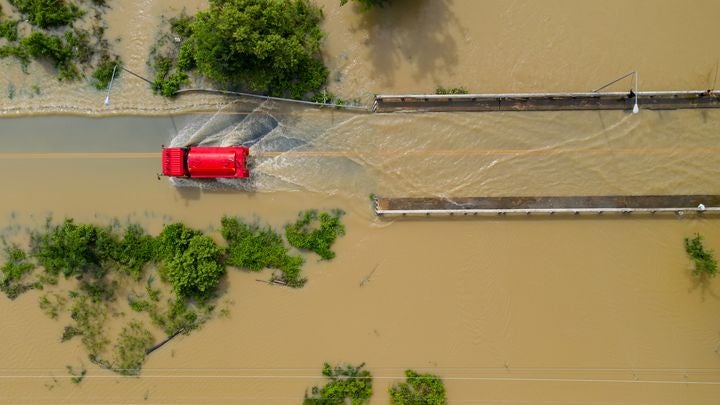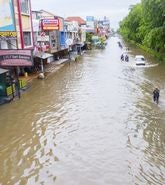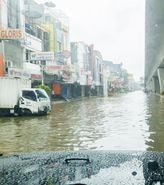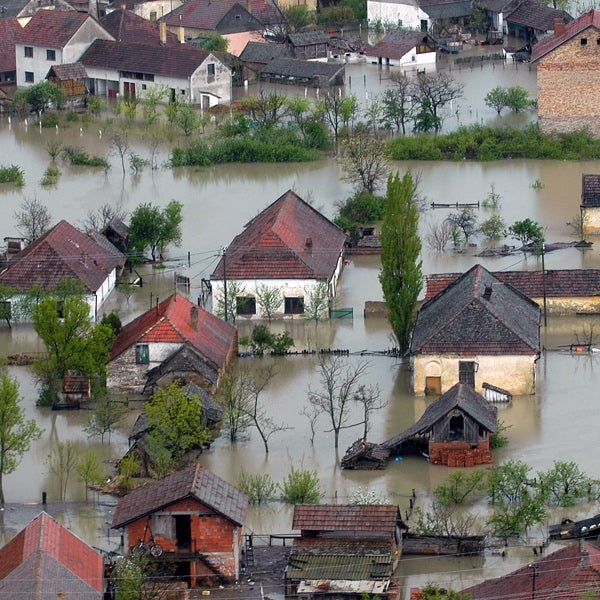Over the last three to four months we have seen major catastrophic flood events in areas ranging from northwestern Europe, northeastern U.S. through to China, and the severity and sheer impact of these and other storms brought flood right to the top of the risk watchlist. But risk professionals can be forgiven for not being aware of all the significant flood events that occur across the world in a given week.
A quick look at a website such as Floodlist – which makes an enormous effort to cover flood event news – shows why flood is the world’s most pervasive peril. For instance, during a typical week at the end of August and early September, flood events impacting Thailand, South Sudan, Spain, Mexico, and Indonesia were on the news feed.
Examining just two events from the news feed we saw floods in Thailand after 120 millimeters (4.7 inches) of rain fell in 24 hours in Samut Prakan Province on August 27, impacting around 320,000 people across 10 provinces in and around Bangkok. In Spain, 233.5 millimeters (9.2 inches) of rain fell in Alcanar in 24 hours on September 1 – including 77.7 millimeters (3.1 inches) in 30 minutes, prompting over 700 calls for assistance.
Maybe because flood events are such a frequent occurrence, we lose sight of the devastating impact they have. The size of an event typically affects hundreds of thousands if not millions of citizens. The many issues floods cause start with the difficulties faced during rescue and providing shelter and essential supplies, then continue with how flood waters damage everything within a community – including housing, businesses and infrastructure – and the time and cost involved in trying to restore and rebuild.
Eighty-Eight Percent Flood Risk Protection Gap
Since 2000, flood has caused total global economic losses of US$1.19 trillion in 2020 values, and there have been 180 individual flood events of at least US$1 billion or more, according to research by Aon. In 2020 alone, floods caused US$76 billion in economic losses, with China, India, and Japan accounting for more than US$50 billion of the total. Only US$9 billion was insured, representing a protection gap of around 88 percent in 2020. Looking back since 2000, the risk protection gap overall stands at 83 percent, representing a larger-than-average chasm; but for 2020, the most recent year, the gap has widened.
Knowing how global the peril is, how events are basin-, region-, or even continent-wide, sweeping over many country borders, and the size and frequency of flood events, what can the insurance industry do to change and respond to global needs for insurance? Risk modeling has a vital role to play to deliver more uniformity around risk analysis and give insurers confidence on the risks they are underwriting and managing regardless of location. So, what if we could level the playing field and get a range of sophisticated flood risk analysis across the world?
Businesses and high-value asset developments are increasingly global. Automobile manufacturer Volkswagen has 117 production plants across the world – how is the risk at all of these locations currently assessed? Mega cities are being developed across the Middle East, from Neom’s “The Line” and the Red Sea Project, both in Saudi Arabia. But how will clients, asset managers, and investors assess the risk to structures in these mega cities prior to their development, when lending finance and going forward with insurance?
Introducing RMS Global Flood Maps

Assessing flood risk globally has been an ambition of RMS®, and we move further towards achieving this ambition with global flood maps for all countries totaling 100 percent of gross written premium (GWP) now available. The maps provide extent of inundation and flood depth at 30-meter resolution globally, across multiple return periods (from 10 to 1,000-years), from high to low exceedance probabilities, consistently derived using a unique development approach.
The maps are available through our cloud-based platform Risk Intelligence™ using the Exposure IQ™ application, standalone for use in house, and via the Location Intelligence API. Combined with the RMS Global Flood Models Suite – which offers sophisticated probabilistic modeling for around 80 percent of flood GWP – these tools enable the assessment of flood risk anywhere in the world.
The insurance market always needs to look for new growth, and while developed markets still have significant opportunities, insurers know that future growth will come from emerging markets. Swiss Re sigma explorer shows that the share of non-life GWP from emerging markets has risen more than fivefold since 1980, from 3 percent to 16 percent; premiums have more than doubled in 10 years to US$550 billion. And looking at the previous 10 years, emerging markets have grown faster than developed markets in nine out of 10 years.
How will these new RMS Global Flood Maps help the insurance market? First, many (re)insurers already have non-modeled flood risk on their books as they manage multinational client portfolios, and these assets could be in developing countries. But as this non-modeled risk represents a small share of the overall portfolio, it has not been a priority in terms of modeling. For those (re)insurers holding business or industrial premises within an insurance portfolio, as the Thai Floods in 2011 with US$12 billion of insured losses showed, there is the potential for big surprises if the risk is not understood.
Second, the maps will allow (re)insurers that already have a presence in developing markets to start expanding coverage with more confidence, whether this is to increase competitiveness with local insurers, sharpen risk selection, or start to innovate with new offerings. With the maps providing continent-wide coverage, (re)insurers can look at flood risk to identify risk accumulations, or opportunities for risk mitigation and diversification of risk across river basins and borders.
Managing Global Flood Risk
Flood is a truly global peril. With worldwide coverage, anyone involved in the flood risk management chain now has the possibility to look at flood risk across a global portfolio and bring sophistication to risk management, identifying profitable opportunities and sustainable risk appetite within a multinational book of business. Experience of flooding is widespread. Many citizens in countries around the world, whether they are in advanced or developing economies have been impacted by floods. The ubiquity of flooding, unlike other perils, means that insurance solutions are needed, understood, and welcomed.
With the availability of RMS Global Flood Maps, we invite you to explore new opportunities, just as you would in your established markets. Whether you are managing existing non-modeled business, expanding from your developing country markets, or building a fledgling global portfolio, talk to us at sales@rms.com or visit our website at rms.com.









